Now & New
A Kintaikyo Sakura Hanami: The Park at Its Pinkest
There are—at the time of this writing—three UNESCO World Heritage Sites (not counting sites spanning multiple regions) in the Chugoku Region of Japan: Itsukushima Shrine on Miyajima, the Hiroshima Peace Memorial (a.k.a. The Atomic Bomb Dome), and the Iwami Ginzan Silver Mine in Shimane Prefecture. Much to my dismay, Iwakuni’s Kintaikyo in neighboring Yamaguchi Prefecture has yet to make the cut, but I would dare say that the historic, wooden arched bridge still ranks up there with the floating shrine and the nuked building with regard to aesthetics and popularity with tourists. Like Miyajima and Peace Memorial Park, Kintaikyo and its surrounding turn pink with cherry blossoms come early April, so Iwakuni becomes flooded with locals and visitors wanting to bask in its photogenic bliss.
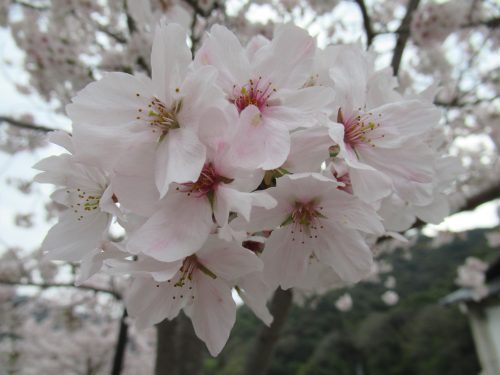
I had previously visited Kintaikyo several times in the months of May, August, September, and October, when the vegetation flanking the bridge appeared normal. There was no autumn foliage and flowers bloomed in normal amounts over Golden Week, so up until this year, I had wanted to see a different version of Kintaikyo really badly. Thus, I chose Saturday, the 6th of April, a day when the cherry blossoms were purported to be in peak season, to capture Kintaikyo, Kikko Park, and Iwakuni Castle at their pinkest!
Photogenic Sakura
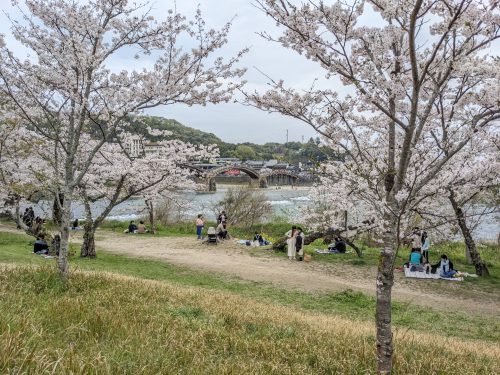
Upon crossing over into Kikko Park, I immediately got to snapping photos of the sakura and all the people enjoying them. Some were couples on a date, some were families picnicking under the blossoms, and some were cosplayers here to exploit that unparalleled springtime backdrop! So many tourists congregating at Kikko Park at this time of year meant that crowds and picnic blankets were everywhere. If you want to eat under the cherry blossoms, I suggest bringing your own food, because the restaurants in the park were congested during lunch hour, and don’t even get me started on the draconian serpentine lines sprouting from wacky ice cream parlor rivals Musashi and Kojiro! Customers waiting in line were given menus (English and Chinese versions are also available) to read and contemplate until it was their turn to order.
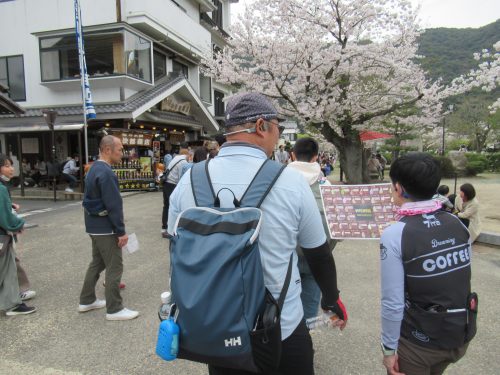
That said, I decided to forego lunch at Kikko Park (at least during normal lunch hours) and focus on snapping sakura pics in the early afternoon. As for food, I survived off a free sample of lotus root soup (lotus root is a famous agricultural product of Iwakuni) that a lady was trying to sell but I wasn’t willing to buy. One of my best shots was this one depicting cherry blossoms enveloping a lamp in a grassy area.
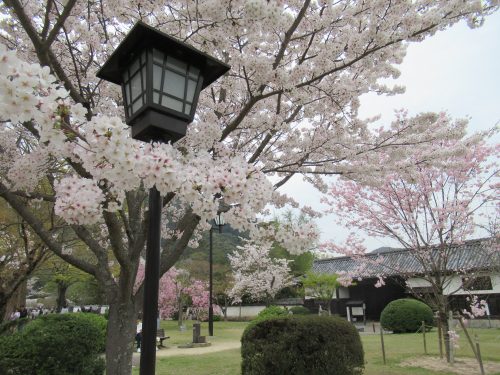
As I mentioned, there were cosplayers throughout Kikko Park taking part in an event called Kosu-on, but as I got nobody’s permission, I have no cosplay pics to show for it. Those who wished to photograph cosplayers during Kosu-on needed to register in advance online, pay a fee on the day of the event, and affix a badge identifying oneself as an official cosplay cameraman in order not to arouse suspicion. I for one had no need to chase cosplayers in the park that day though, for I was here primarily for the cherry blossoms, which extended from Kintaikyo through Kikko Park all the way up to hilltop Iwakuni Castle off in the distance. There was no need for me to pay a visit to any of Kikko Park’s spectacular museums either, for the sakura turned the great outdoors into a temporary natural museum of sorts.
Leisurely Late Lunch
At long last, I caved to the cries of my suffering stomach and tried to find a place that still sold lunch. Before arriving in Iwakuni, I had been reading a travel guide and learned about a café called Wataboushi that dished out some photogenic food. I eventually found the place while walking in the direction of the ropeway station, as it was situated right across from the station building. A sign advertising yummy soft serve ice cream and didn’t have the nightmarish lines that Musashi and Kojiro had was what won me over, so when I entered the restaurant, a cup of strawberry shaved ice topped with creamy, milk-flavored soft serve was the first thing I ordered.
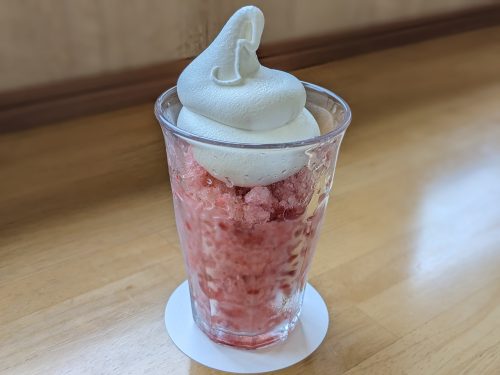
With regard to actual food, Wataboushi had stopped selling their lunch specials, but a heap of light meal options still remained on the menu. I went for a scalding hot dish of macaroni gratin, which contained shrimp, chicken, mushrooms, and a rich white sauce covered in zesty cheese before being baked. I spent a lot of time trying to take the best photos of my late lunch in the name of stalling until the gratin cooled to a consumable temperature, but even after waiting as long as I did, I still found myself burning my tongue and the roof of my mouth with each bite. Given the alluring smell and taste of the dish, though, I have no regrets diving into my macaroni gratin too soon.
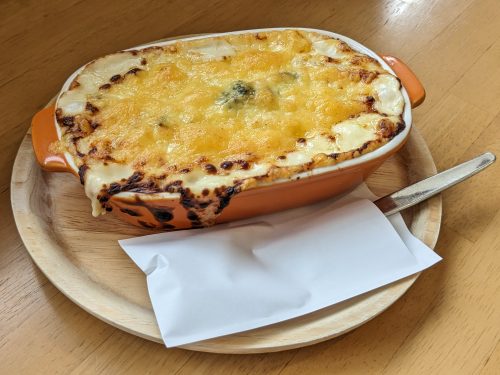
Moment of Joy: New Stomping Grounds
Enjoying my scrumptious soft serve and enticing entrée in this calm café after the crowds had dissipated was pure bliss, especially as I sat at a counter looking out the window into the courtyard. The courtyard seats are prioritized for guests who brought their pets to eat, but diners sitting indoors are also welcome to walk around outdoors and see the pet tortoise. There was a pair of tongs available for customers to try feeding the cuddly chelonian when it was hungry, but it would seem our reptilian friend only wanted to nap during my visit.
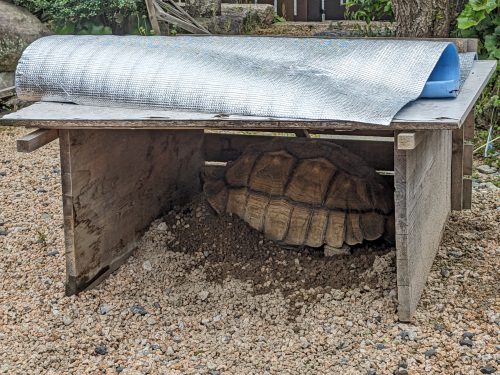
I had a wonderful time dining and winding down at Wataboushi, and I hope to be back again soon to try their actual lunch sets when tourist numbers go down. Next time I’m in the mood for soft serve ice cream at Kikko Park, I think I’ll skip the double trouble that happens at Musashi and Kojiro for a carefree experience at Wataboushi.
Skyward Sakura
The sakura aren’t just pretty at ground level, as these pink beauties can also be appreciated from a birds-eye view atop Iwakuni Castle. After lunch, I went to the ropeway station and bought a set ticket that included a round trip on the ropeway, admission to Iwakuni Castle’s keep, discounts for four museums in Kikko Park, and a round trip admission ticket for Kintaikyo. Be sure to buy the set ticket before traversing Kintaikyo if you know you’re going to visit Iwakuni Castle as well, but the set ticket can also be bought on either side of Kintaikyo. Those who wish to go up to Iwakuni Castle before crossing Kintaikyo can get around the bridge by first crossing the free Kinjokyo that runs parallel to Kintaikyo, or by approaching Kikko Park from JR Kawanishi Station instead of getting off at JR Iwakuni Station and transferring to a bus.
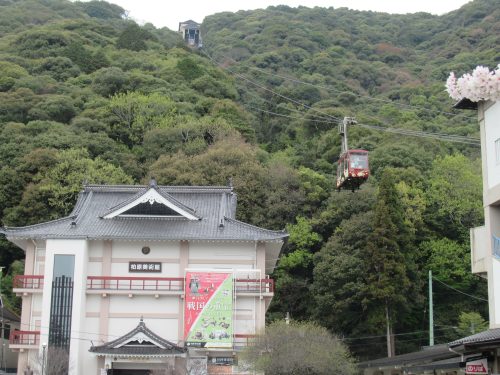
The gondolas on the ropeway have a high capacity, meaning that lots of passengers can be accommodated at once so that even long lines progress quickly. Part of the reason for the capacity lies in the little seating space available on board, but in practice, hardly anyone wants to sit while the gondola is in motion because everyone is preoccupied with looking out the front or rear window. Once we got to the top, I was greeted by a park that featured a playground as well as an old-fashioned cuckoo clock tower that played music every fifteen minutes. I stuck around to hear the next tune play, which was Utsukushiki Ten’nen (美しき天然 – “Beautiful Nature”) but didn’t get to hear the other tracks that day. The display of the cormorant fishers inside the clock moved while the music played, but honestly, I was expecting something to pop out of the clock as well.
After that, I began my trek up to the castle keep, but there were two paths to choose from: a flat, paved road on the left, and a mountainous dirt path with steps on the right (both take 8 minutes).
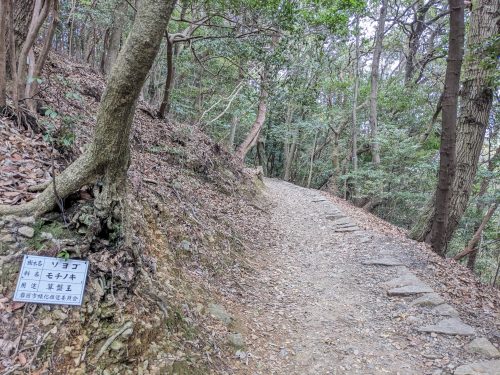
Being the adventurous spirit that I am, choosing the path on the right on a day without precipitation was a no-brainer. In almost no time at all, I reached the castle keep, and though it was a grand sight being flanked by sakura and all, it’s a challenge getting a good shot of it up close. I took the picture below from the southern end of Kikko Park by zooming in as close as I could without compromising the picture quality. It’s times like these I’m grateful I travel with a proper digital camera on my person; smartphone cameras still don’t come this close, literally!
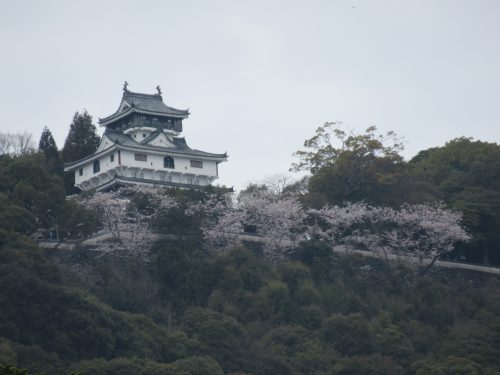
Iwakuni Castle may appear old, but it’s a reconstructed keep just like Hiroshima Castle or Fukuyama Castle so there’s no need to remove one’s shoes upon entry. Since almost everybody who rides the ropeway is here to see the castle, the entrance tends to get a bit crowded and it’s hard to take pictures of the first few exhibits. It took a bit of patience, luck, and good timing to snap this photo of an unsheathed tachi (Japanese longsword) without any photobombs.
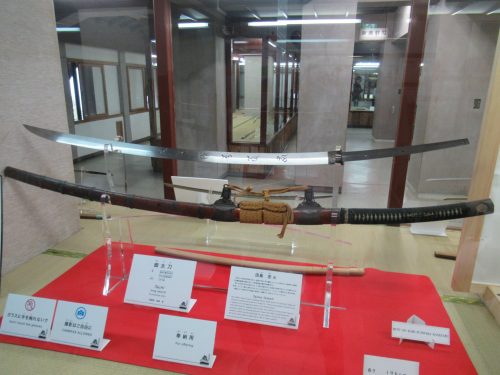
The museum inside the castle keep spans all three stories of the building, and contained many more replicas of melee weapons, armor, firearms, and miscellanea from the feudal ages. The second floor of Iwakuni Castle featured other major castles around Japan, with beautiful albeit dated pictures of their keeps as well as their locations. Finally, at the top was the observatory with four windows for staring outside, and one side even had two sets of those paid binoculars. Two out of the four windows afforded visitors an unmatched view of the town below, awash in a rosy hue from the cheery cherry trees.
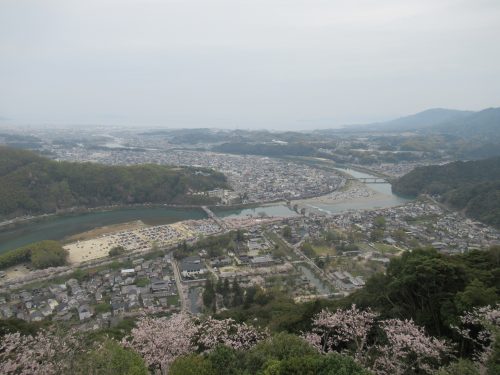
When closing time approached, I left the building and made my way back to the top ropeway station, where a line awaiting the next service had formed. It took a while for me to ride the gondola, so while I was waiting, the cuckoo clock played music again, although it was the same song as before, meaning that only an hour had passed since I had arrived. On my way down the ropeway, I let others squeeze up against the window while I nabbed myself a comfy seat on the bench.
Rainbow Sakura
I was pretty much done for the day after reaching ground level, and all there was left to do was wait for the lights to come on, illuminating the cherry blossoms in Kikko Park. As I waited for it to get dark, I decided to walk across Kintaikyo and check out the festival food scene on either side of the bridge. There were food stands galore on both banks of the Nishiki River; the ones by the north bank were set up just for the event, whereas these ones by the south bank seem to be here 365 days a year.
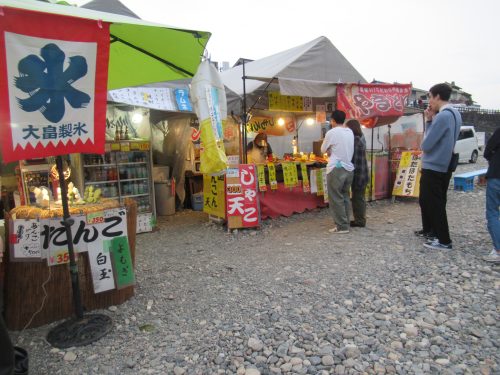
The stands on the south bank sold their usual snacks: dango (grilled rice dumplings on a skewer), grilled meats, shaved ice, the works. Real diversity in festival food lay on the north bank, where more stands—and consequently—more eating spaces were. Tourists who brought picnic blankets or didn’t mind dirtying their posteriors simply sat on the grass or rocks, but those looking for a classier outdoor dining experience had the opportunity to sit at one of the raised tables, which required the removal of footwear prior to getting on. Seeing everyone enjoying their festival fare among the cherry blossoms tempted me to join in and buy something, but I suppressed said temptation in favor of having a more cost-effective dinner after going home.

After a while, the sky finally got dark enough for the illumination to begin in earnest. Lamps lined along the banks of the Nishiki River shone in various hues that cycled every few seconds, seemingly dying the sakura a spectrum of colors. Onlookers tended to stand and wait until the blossoms were lit up in their favorite color to take their photos; pink was a popular choice for a considerable portion of visitors, but I for one prefer green flowers since we don’t see a lot of those in nature.
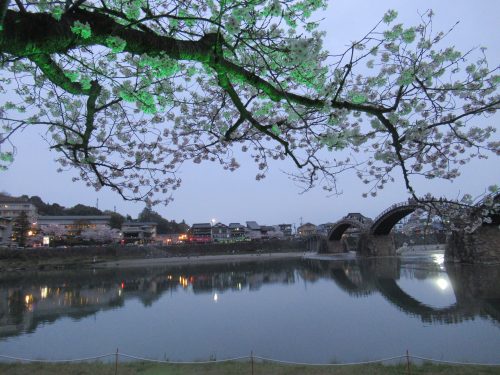
The sakura illumination by Kintaikyo runs all the way through mid-April, but there’s a lot to see and do besides the illumination, so no sweat if you have no time to stick around until nighttime. I also figured it was time to hit the old dusty trail after the beginning of the illumination, as it does take a while to get back to Iwakuni by bus or Kawanishi Station on foot. Sakura season is hands-down one of the best—if not the very best—time of year to visit Kintaikyo, so save the date on your next trip to the Hiroshima area. Maybe next April I’ll try packing a picnic lunch to enjoy at Kikko Park or taking one of those boat tours along the Nishiki River that other tourists were clamoring to try. In spite of its beauty, history, and status as a tourist site that represents Yamaguchi Prefecture as a whole, Kintaikyo has yet to be nominated a UNESCO World Heritage Site, but maybe it ought to be. Take it from us, though, if this site—which isn’t even in Hiroshima Prefecture—is good enough to be featured multiple times on our blog, you have everything to gain by taking in the sakura here.
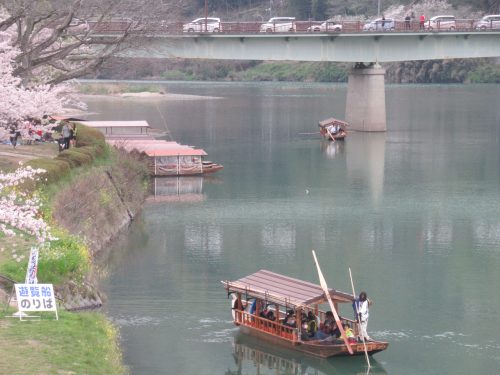
Written by the Joy in Hiroshima Team
